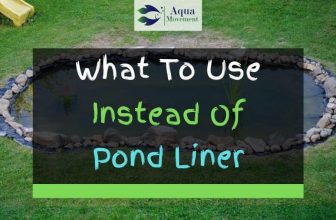9 Best Pond Algae Eaters (With Pictures)
We’re all familiar with that awful green mass that ruin a good pond and put even the most experienced pond keepers in tears. Yes, algae is truly the bane of every self-respecting pond owner’s existence.
Not only does this pernicious living matter destroy the carefully planned aesthetics of your pond, but it can also be detrimental to the health of your fish.
By blocking out sunlight, depleting the oxygen supply in the water, and generally throwing the pond chemistry out of balance, algae can have extremely negative effects for the entire ecosystem.
But you know that already, that’s why you’ve come here!
Fortunately, there is a relatively simple solution for outdoor ponds adversely affected by algae.
Pond algae eaters, also commonly known as suckers, are small fish that can complement your existing pond residents.
These little critters simply adore algae, and will happily chew down on that green mush.
This not only solves your algae problem, but it adds variety and spice to your pond. It truly is a win-win situation.
Table of Contents
9 Best Pond Algae Eaters

Of course, before you introduce any new species to your pond, there are lots of factors you should consider.
Hence, in this article, we will present some of the guidelines for taking care of and selecting pond algae eaters, and show you some of the best options to consider.
Common Pleco
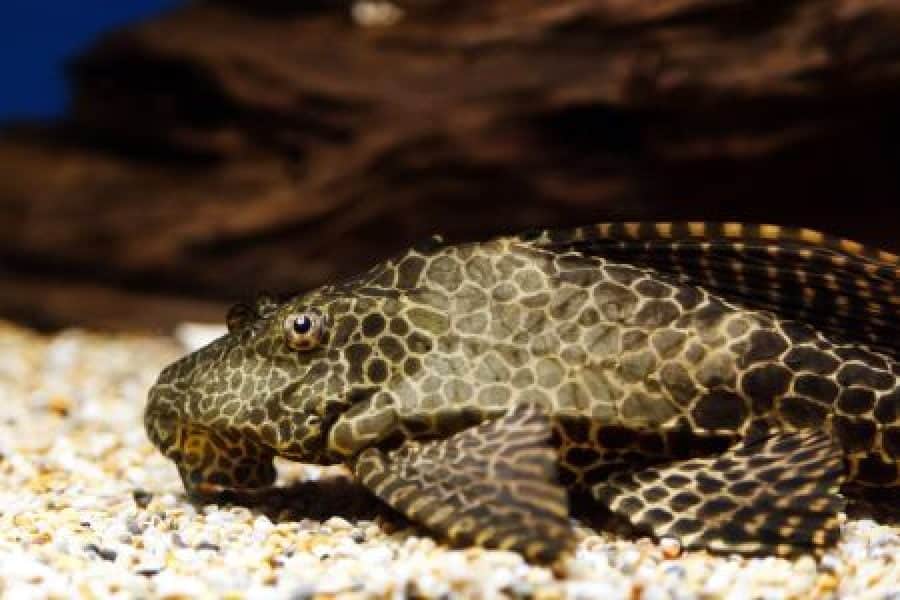
The Common Pleco is one of the most popular algae eaters used by pond owners all over the world.
This fish is also known as the suckermouth catfish, and it is an armoured catfish, named for the armour like scales adorning its body.
This is quite a large fish for a simple algae eater, and although they are usually sold when they are young and small, as adults they can grow up to 50 cm in length.
Obviously, this means they have the potential to eat more algae than some of their smaller Pleco cousins.
As a result, they may be better suited to some larger ponds or aquariums. In fact, a single adult of this type of Pleco can eat a very large amount of string algae.
In general, Plecos are easy going, peaceable fish so they are not likely to cause any trouble with any other residents of your pond. They’re not likely to start fights.
However, as they are not very picky omnivores, they will also eat small crustaceans and aquatic plants as well as your troublesome algae.
You should take this into account before investing in this fish.
They are only suitable for temperate climates as well, so if your pond temperature falls below 50 F in the winter, then you will need to bring them in to warmer conditions.
Siamese Algae Eater
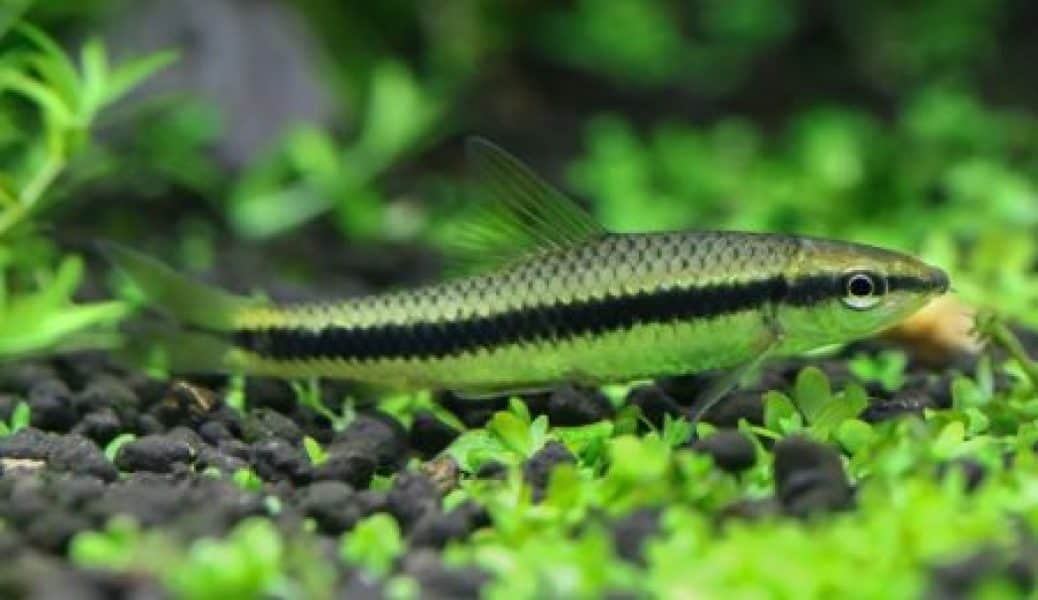
You probably won’t be surprised that this fish will also readily consume the algae in your pond. It is a fantastic pond algae eater, hailing from the freshwater carp family.
This means they will eat all varieties of algae, from string algae to red algae that might be unappetizing to other species of fish.
This fish is slightly smaller than the above mentioned Common Pleco, maxing out at about 6 inches, but it is more spirited than some other docile fish species.
However, it is less aggressive than some other spirited algae eaters such as Chinese Algae Eaters, so it will mix well in most fish communities.
This fish hails from Southeast Asia originally, in the region around the Malay Peninsula. As a result, it is best suited to temperate climates and hot water in the range of 24-26 C.
This should be carefully considered when purchasing these algae eaters for cooler climates.
There also exists an optimal range of pH for this fish, from 6.5-8 and a similar range for water hardness. It is highly recommended that these fish are transferred indoors for winter.
Koi Fish
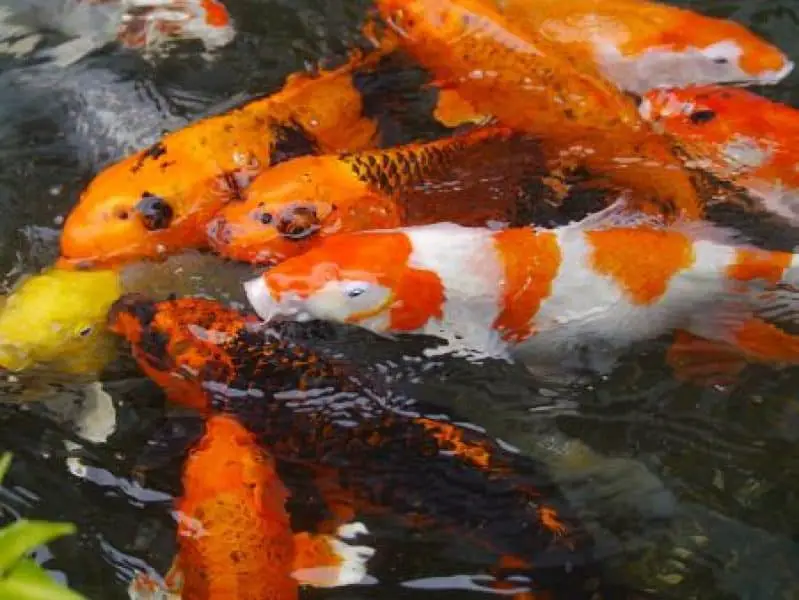
Koi fish, originally native to Asia, have boomed in popularity in recent years and have become instantly recognizable features of outdoor ponds and aquariums all over the world.
This overgrown gold fish, which have extremely long life spans, as well as being a valuable carp, are also excellent pond algae eaters.
They are of course, omnivorous species, and as a result they will happily munch on algae.
However, algae is not their preferred food source, so if you give them a lot of complete food or brine shrimp for example, they will not be compelled to consume the algae infesting your bond.
More commonly, Koi (or goldfish) will eat algae during the cooler winter months, where there are far fewer other food sources available.
Koi are an excellent addition to any pond, and you will doubtless get much enjoyment from seeing them rush to the surface to eat from your hand.
However, as a pond algae eater, there are better options available.
Nevertheless, they will complement the algae destroying work of many other species when they are housed together.
Pond Loach
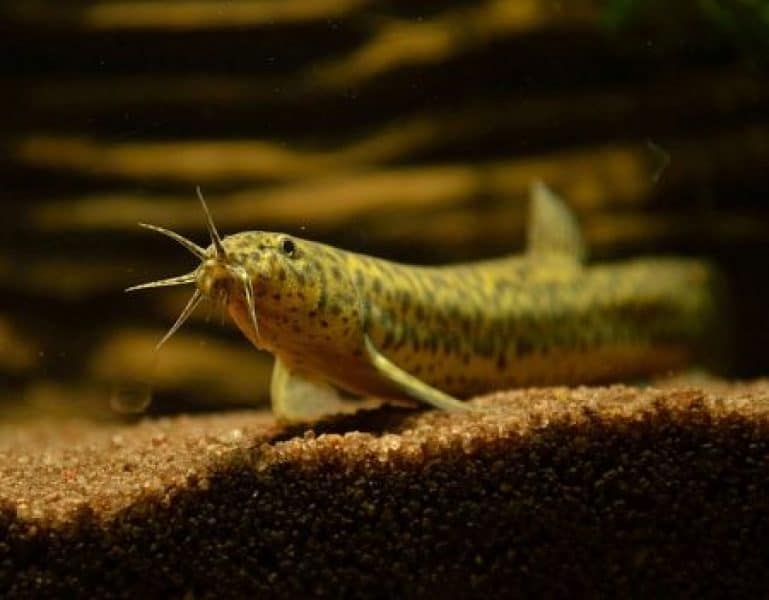
This is an extremely convenient option, because, unlike the species outlined above, this little critter does not have to be transferred inside for the winter.
This is not a tropical fish; hence it is much better suited to colder climates, and can continue its algae fighting duties all year round.
This is an exceptionally hardy fish which can deal with a large range of pond temperatures, from 40 to 77 F.
In general, it may not eat the same amount of algae as Plecos for example, because it tends to feed on other food sources such as insects as well.
Nevertheless, a few Pond Loaches will probably suffice for most moderately sized ponds, especially if combined with other omnivorous fish.
The typical Pond Loach is a rather social fish, preferring to hang out in small groups when found in the wild.
But, experience has shown that these creatures adapt well to ornamental ponds, and can thrive quite well in so called community ponds, among a wide variety of other species.
If you’re a beginner pond owner, and don’t want a lot of up keep work, or are worried about the task of transferring fish for the winter, then this may be the perfect pond algae eater for you.
They only need to be brought indoors in extremely cold weather, which is (hopefully), rare.
Guppies

Guppies (also known as rainbow fish or million fish) are an extremely popular choice for ponds or aquariums anyways.
This is probably down to their attractive appearance, featuring slightly transparent bodies and dashes of color in the males of the species.
However, what is less known about this renowned tropical fish, is that, in certain circumstances, it can also act as a good algae eater.
Granted, this is not the best choice if you have an extensive algae problem, but where algae is not a major issue (such as in shaded areas or oxygen deprived ponds) they might suffice.
Guppies will prefer to eat complete food flakes or plankton, but they do also have a fondness for softer types of algae.
Be warned though, these little buggers can reproduce quickly, so you’ve got to be vigilant and make sure your pond is not overrun with them.
Guppies can survive in waters above 50 F, so you should take account of your local temperatures, especially in the winter months.
Also, be careful when introducing them in community ponds as they will be readily preyed upon by larger species.
As well as keeping algae at bay in small ornamental ponds, they will also keep mosquito larvae and other insects in check.
Chinese High Banded Fin Shark
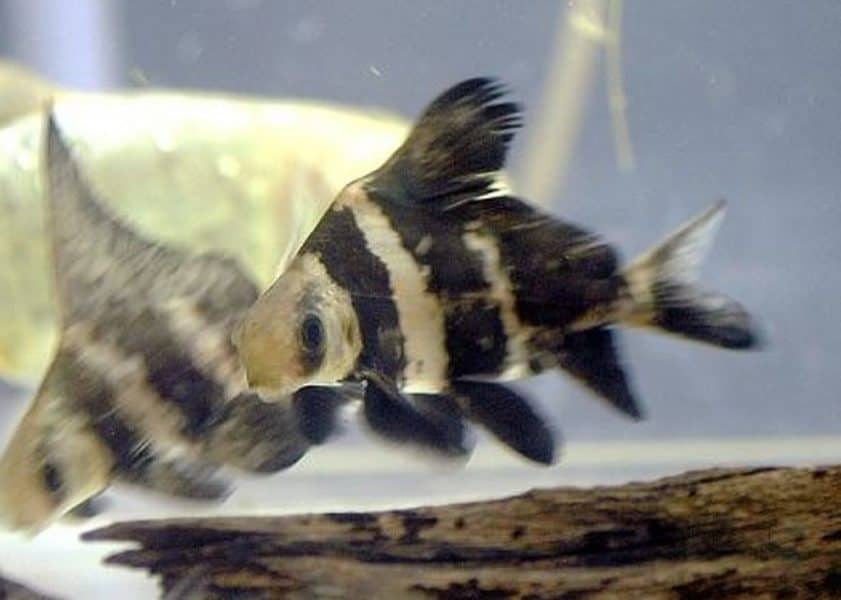
Believe it or not, this little pond algae eater is as cool as his name sounds! This freshwater aquarium fish is also known as the high-fin loach, among a multitude of other names.
It is very recognizable due to its high fin, black and white stripes, and waspish appearance, and is native to the Yangtze river basin in China.
This is a perfect example of a bottom feeder, a creature which lives on the bed of the pond and scavenges their food, rather than roaming wildly. As a result, algae is a prime part of their diet.
That’s what helps make these fish such a great control mechanism for any pond. In addition, they are a very social species, happily living in harmony with guppies, mollies, and many other creatures.
Obviously, you should be cautious when introducing the fish to ponds with other species present, as they can grow to quite large sizes (up to 4 feet in some cases).
This is another good option for ponds in cooler locations, as this hardy species can withstand temperatures between 55 and 75 F.
Just make sure you have the room to accommodate them at their full size.
Grass Carp
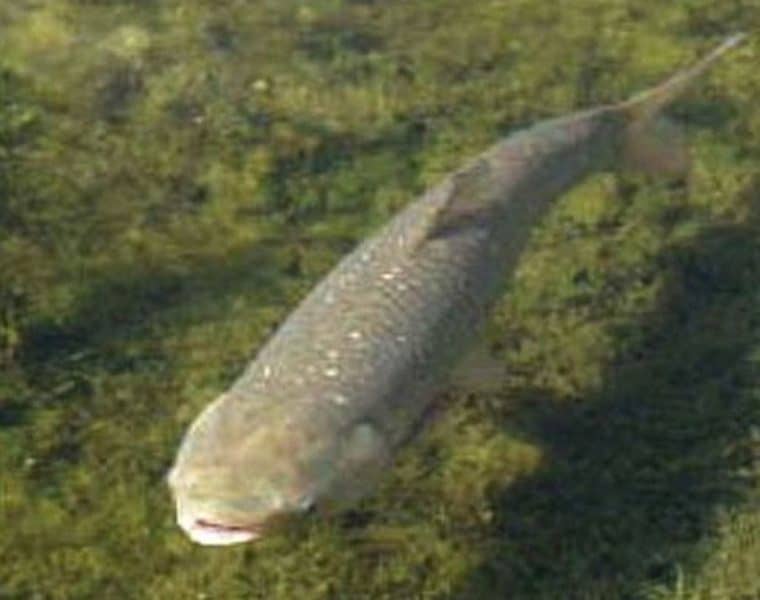
Like a lot of the other species that feature on this list, these fish originate from Asia.
Originally it was cultivated for food, but now it is much more commonly used in aquaculture as a means of algae control. It derives its name from its dark olive color of its torpedo shaped body.
One of the most amazing facts about the grass carp is that it can eat up to three times its own body weight daily.
If the majority of this food stuff comes from algae, then you are in business, and this species will easily tame even the largest of ponds.
Once they hit a defined temperature range, grass carp start to reproduce and they can do this very quickly. This can actually cause far greater issues than some nuisance algae, so you should reflect very carefully before deciding to introduce this species.
In fact, grass carp is so prone to blooms that in many areas it is only legally to possess the sterile form of the creature, so that the populations cannot get out of control.
As well as munching on algae, this species will happily eat a lot of problematic aquatic vegetation, such as elodea and duckweed.
It prefers plant like algae to the type of green filamentous algae that is sometimes found on ponds, so it might not be totally suitable for your situation.
Otocinclus Catfish

This is another pond algae eater that happens to consider what you think of as a nuisance, algae, to be a delicacy!
They are typically small in stature, just reaching about 1 to 2 inches in length, but don’t let their small size deceive you.
This little species can eat prodigious amounts of algae. They will even eat the slimy brown kind of algae that many other algae feasters tend to avoid.
Another very important to consider is how these fish will integrate into your community pond. Luckily, this species of fish is very peaceable and calm, meaning it is very unlikely to disturb other residents of the pond.
Also, because they are so small, they are unlikely to damage other fish while they go about their important task of clearing algae.
Of course, you have to be careful when introducing them to ponds which have larger fish, as they will quickly become a tasty snack themselves!
This fish can survive in a reasonable range of temperature, but they do tend to thrive best in warm waters, typically between 72 and 82 F.
They should be brought indoors for the winter to preserve their health and make sure they can keep going for the next year.
Flying Fox

This fish neither flies nor is it a fox, but it can do an awesome job of clearing your pond of unwanted algae.
Unfortunately, this species is very commonly mistaken for the aforementioned Siamese Algae Eater, and it can perform a similar task.
It is especially known for eating green algae, which can be among the most common annoyances for pond owners.
It prefers to feast on softer, simpler forms of algae, so it is particularly useful for dealing with summertime blooms of algae.
This is suitable for community tanks or aquariums. It gets along just fine with a host of other fish, including but not limited to, loaches, barbs, acaras and angelfish.
However, a small group of flying foxes may exhibit some territorial tendencies, so be carefully when you introduce a couple at a time.
Pond Algae Eaters
There is no doubt that algae can be a real bug bear for many pond owners.
It really detracts from the beauty of your pond, and it can be incredibly damaging for the overall health of the ecosystem that you have worked so hard to create.
That is why it is so important to keep it in check.
Prevention
We all know that prevention is better than cure. Nobody wants to have to spend hours cleaning out their pond from algae blooms, or installing expensive aerators to fix the problem.
That is why these types of pond algae eater fish are just perfect. They will attack the algae as soon as it appears, keeping your pond in ship shape.
What’s more, most of these species are relatively low maintenance, and they add another bit of color and variety to your oasis.
What to consider
When it comes to choosing what exact type of algae eater you should buy, there are many factors to consider.
For example, how warm or cold is the water in your pond, and does it vary a lot seasonally?
How willing are you to transfer your fish each winter?
What other type of fish do you already keep in the pond, and how much roaming space is available for new species?
Only you can answer these questions, and the answers will dictate which type is most suitable for you.
Other options
In some extreme cases, especially in the summer, even these wonderful algae eaters will not be able to keep the algae at bay.
In such cases, more extreme measures may be needed. This could include chemical or mechanical methods to try and control the algae growth.
For example, you might consider using UV light, chemical treatments, barley straw or aerators.
It might even be necessary to use a combination of these methods to really get back control of your pond.
In most cases your algae eating fish should be unaffected, and will even help the process along.
4 Tips On Algae Control With Barley Straw In Ponds
Conclusion
Hopefully this has given you some idea of the best places to start looking for algae eating pond fish.
There are many different types available, each with their own peculiar perks and disadvantages. You need to look at your own situation and consider what works for you.
Some of the options presented are more suitable for large ponds with heavy algae problems, while others are more suited to smaller, ornamental water features, with much smaller algae issues.
In any case, the ideas, hints and guidelines should allow you to pick out exactly the algae eater you need, and give you an idea of the best way to care for your new charge.
Remember, as well as providing you with an invaluable service, these little critters are part of your artificial ecosystem, so you need to provide them with the best, most healthy environment possible.


